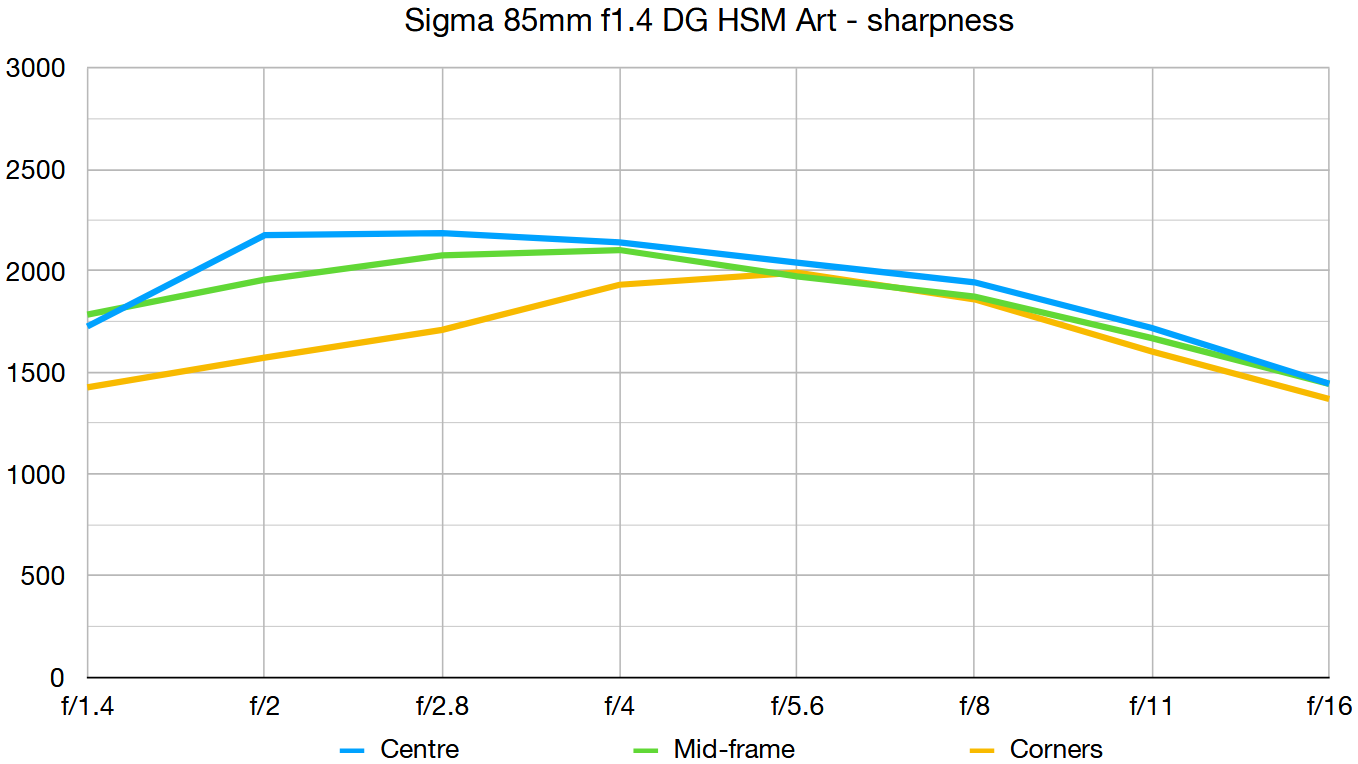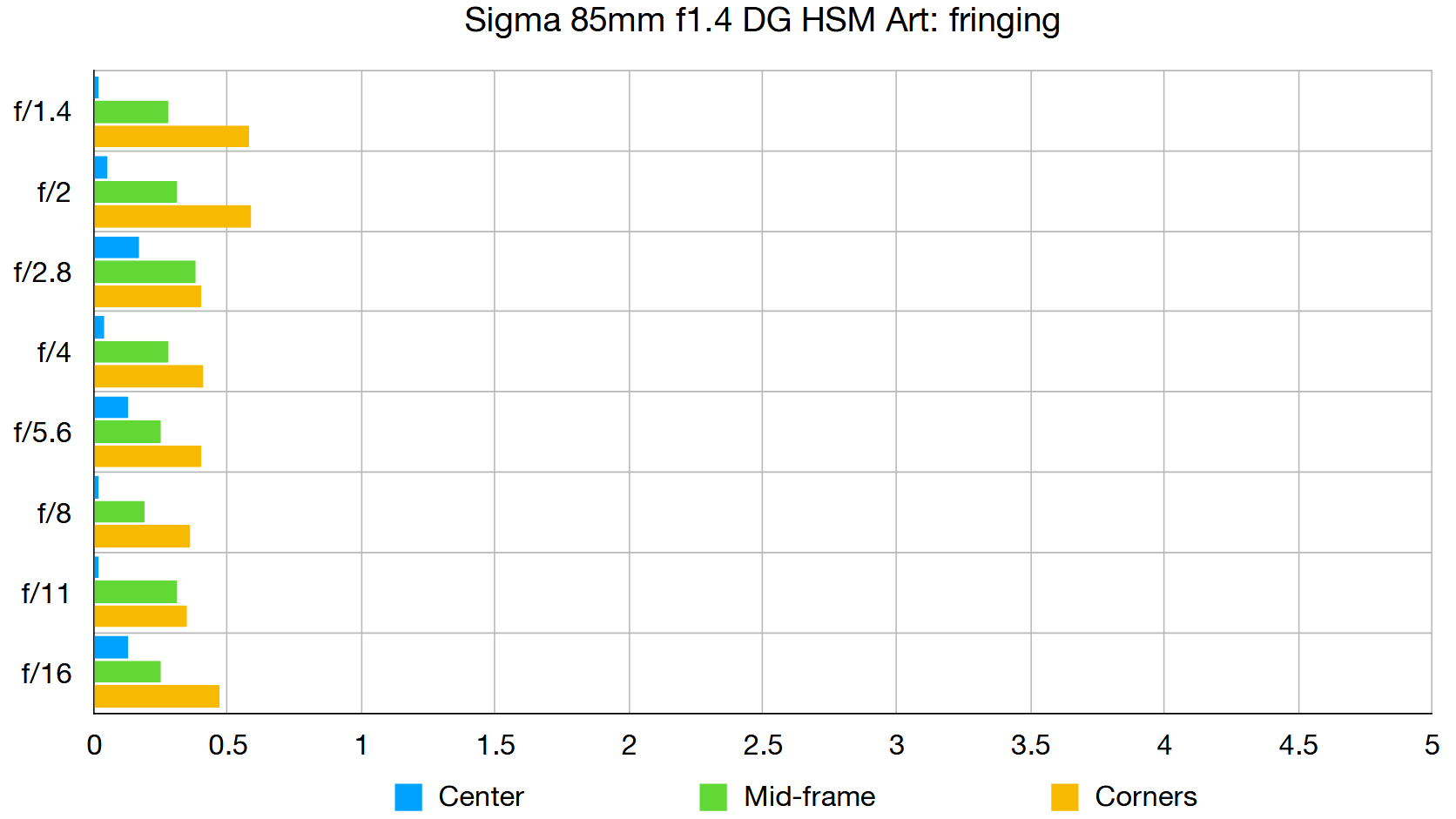Sigma 85mm F/14 Dg Hsm Art Lens Review
Our Verdict
Every bit a full-frame compatible portrait lens for Canon and Nikon DSLRs, this Sigma is a heavyweight contender in every way. It has a big, weighty build for an 85mm f/1.iv prime only is positively supersized in terms of prototype quality. The lens delivers fantabulous sharpness even when shooting wide-open, along with beautiful bokeh. It's an accented cracker.
For
- Excellent build quality
- Refined handling
- Spectacular image quality
Against
- Physically large build
- Weighs over a kilogram
Digital Camera World Verdict
As a full-frame compatible portrait lens for Catechism and Nikon DSLRs, this Sigma is a heavyweight contender in every way. It has a big, weighty build for an 85mm f/1.4 prime but is positively supersized in terms of image quality. The lens delivers excellent sharpness even when shooting wide-open up, along with beautiful bokeh. It's an accented cracker.
Pros
- +
Excellent build quality
- +
Refined handling
- +
Spectacular epitome quality
- +
Cons
- -
Physically large build
- -
Weighs over a kilogram
- -
The Sigma 85mm f/1.4 DG HSM Fine art measures 95x126mm and tips the scales at 1,130g. It'south bluntly enormous for an 85mm f/i.four lens but, typical of Sigma'southward Fine art line-up, the design is firmly focused on epitome quality without any concessions to reducing size and weight. A tell-tale sign of the girth is its oversized 86mm filter thread. As with whatever 'fast' 85mm lens, its prime number attraction is for portraiture and still-life photography.
Specifications
Mount: Catechism EF, Nikon F FX, Sigma
Lens construction: 14 elements in 12 groups
Angle of view: 28.vi degrees
Diaphragm blades: 9
Minimum aperture: f/16
Minimum focusing distance: 0.85m
Maximum magnification ratio: 0.12x
Filter size: 86mm
Dimensions: 95x126mm
Weight: 1,130g
Central features
Despite not having an image stabilizer, the optical path is long and complex, based on 14 elements. These include an aspherical element at the rear and two SLD (Special Low Dispersion) elements, placed at the centre and towards the front. We've been thoroughly impressed by the build quality of all Sigma Art-line lenses but, unlike some of them, this i has the boosted bonus of weather-seals, which will please rainy-day hymeneals photographers.
Band-type ultrasonic autofocus comes with the usual total-time transmission override. The focus ring is mechanically rather than electronically coupled merely yet works smoothly and with proficient precision. A bonus for Canon DSLR shooters is that, like nigh of Sigma's 'Global Vision' Art, Sports and Gimmicky lenses, in-camera corrections are bachelor for the likes of lateral chromatic aberration, peripheral illumination and distortion.
Performance
Autofocus is both fast and generally accurate, although the latter is also dependent on the host camera'south abilities. Sharpness beyond the entire epitome frame is hugely impressive for an f/ane.4 lens, even when shooting wide-open. We've noticed an 'onion band' effect in the bokeh of some Sigma Art lenses but it'southward particularly negligible in the 85mm, and bokeh remains silky-smooth when stopping downwardly, helped past a well-rounded nine-bract diaphragm.
Lab results
We run a range of lab tests under controlled conditions, using the Imatest Master testing suite. Photos of exam charts are taken across the range of apertures and zooms (where available), and so analyzed for sharpness, baloney and chromatic aberrations.
We use Imatest SFR (spatial frequency response) charts and analysis software to plot lens resolution at the centre of the prototype frame, corners and mid-signal distances, across the range of discontinuity settings and, with zoom lenses, at four different focal lengths. The tests as well measure distortion and color fringing (chromatic aberration).
Sharpness:

Lenses with a fast, f/i.4 aperture are often quite soft when shooting wide-open, but this Sigma retains superb sharpness and contrast. At f/2, sharpness beyond virtually of the image frame becomes spectacular, and information technology'southward first-class at the extreme edges and corners by the fourth dimension you hit f/2.8.
Fringing:

Both lateral and axial (or longitudinal) chromatic aberrations are extremely negligible, fifty-fifty when uncorrected in-camera.
Distortion: 0.03
Every bit borne out by our practically perfect lab score, the Sigma is substantially a zero-distortion lens.
Verdict
This Sigma Art lens isn't for the feint-hearted, as it's peculiarly big and heavy for an 85mm f/1.4. The reward is in the prototype quality, which is simply gorgeous in all respects. The blend of sharpness and beautiful bokeh makes the lens superb for portraiture, along with the bonus of negligible color fringing and practically cipher baloney.
Read more:
• The best photographic camera for portraits
• The best lens for portraits
• The best photography lighting kits
• Portrait photography tips: how to do portrait lighting without a model
• Boudoir photography tips
Source: https://www.digitalcameraworld.com/uk/reviews/sigma-85mm-f14-dg-hsm-art-review
0 Response to "Sigma 85mm F/14 Dg Hsm Art Lens Review"
Post a Comment